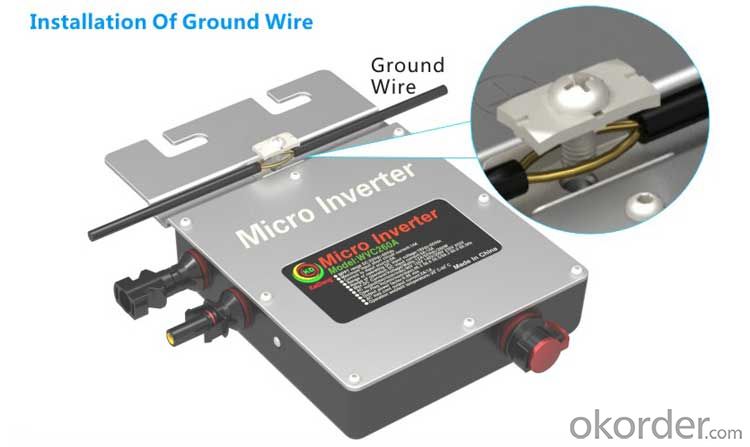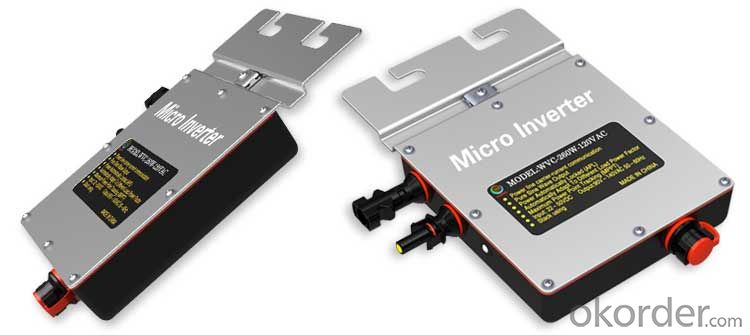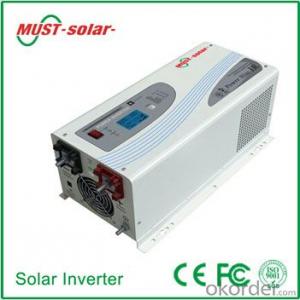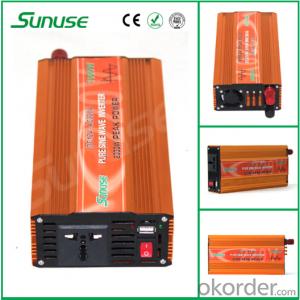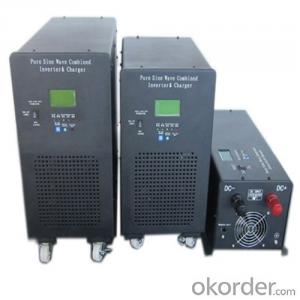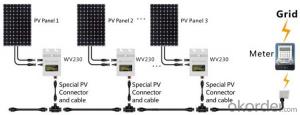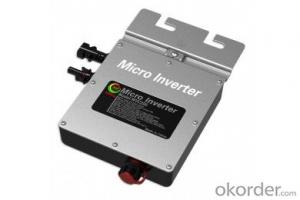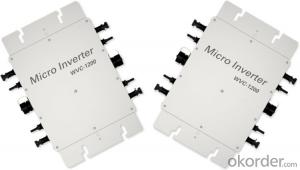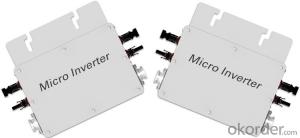Solar Inverter 10kva KD-WV230 Interver, 260W, High Efficiency & Best Cost-Effectiveness
- Loading Port:
- China main port
- Payment Terms:
- TT OR LC
- Min Order Qty:
- 1000 pc
- Supply Capability:
- 100000 pc/month
OKorder Service Pledge
OKorder Financial Service
You Might Also Like
Structure
DC input voltage range:22-50VDC
AC output voltage range:80-160VAC/180-260VAC
AC output power :260W
AC frequency range:50Hz/60Hz
G.W.:1.1kg
Size:250mm*200mm*60mm
KD-WV230 Series Using IP67 waterproof streamline design, Can effectively prevent rainwater on the surface erosion, Built-in high-performance Maximum Power Point Tracking(MPPT)Function,Better able to track changes in the solar luminosity and control different output power, Effectively capture and collect sunlight. AC electric power transmission using the reverse transmission technology, Is one of our patented technology, The inverter output power can provide load priority use, Extra electricity to the grid, Efficient use of the inverter to the power emitted, Electricity transmission rate of up to 99%.
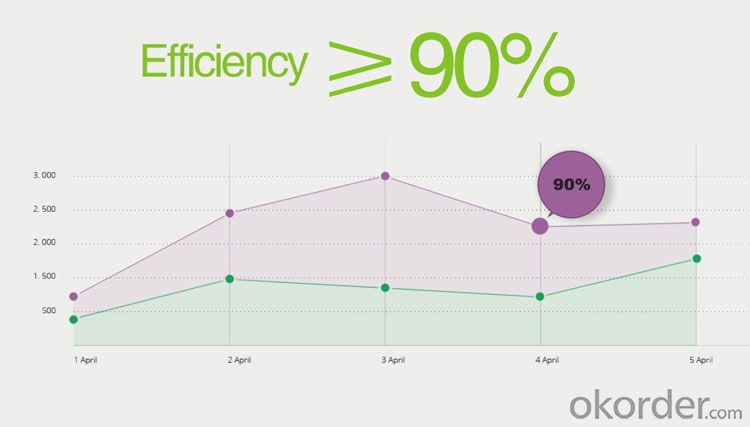
Features

Pure Sine Wave Output;
High performance Maximum Power Point Tracking(MPPT);
Power Automatically Locked(APL);
Reverse power transmission;
High-Frequency High Conversion Rate;
Anti-Islanding Protect;
Input /output is fully isolated to protect the electrical safety;
Multiple parallel stacking;
The Leading Patent Technology;
IP67 WaterProof;
Flexible Installation;
Simplify maintenance (user serviceable)
High Efficiency & Best Cost-Effectiveness
Images
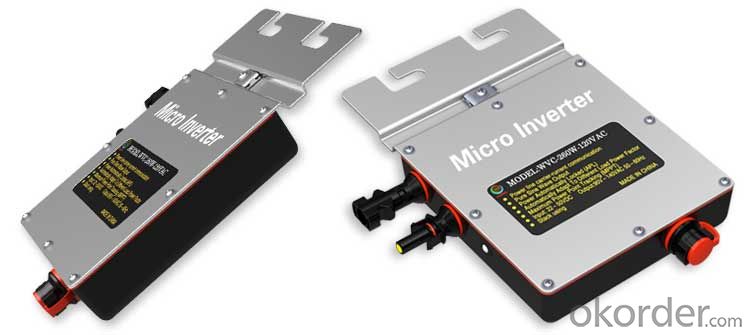

Specification
Input Data | KD-WV230-120VAC/230VAC | ||||
Recommended input power | 200-300Watt | ||||
Recommend the use of PV modules | 300W/Vmp>34V/Voc<50V | ||||
Maximum input DC voltage | 50V | ||||
Peak power tracking voltage | 25-40V | ||||
Operating Voltage Range | 17-50V | ||||
Min / Max start voltage | 22-50V | ||||
Maximum DC short current | 15A | ||||
Maximum Input Current | 9.8A | ||||
Output Data | @120VAC | @230VAC | |||
Peak power output | 260Watt | 260Watt | |||
Rated output power | 250Watt | 250Watt | |||
Rated output current | 2.08A | 0.92A | |||
Rated voltage range | 80-160VAC | 180-260VAC | |||
Rated frequency range | 57-62.5Hz | 47-52.5Hz | |||
Power factor | >96% | >96% | |||
Maximum units per branch circuit | 15PCS(Single-phase) | 30PCS(Single-phase) | |||
Output Efficiency | @120VAC | @230VAC | |||
Static MPPT efficiency | 99.5% | 99.5% | |||
Maximum output efficiency | 92.3% | 94.6% | |||
The average efficiency | 91.2% | 93.1% | |||
Night time power consumption | <50mW Max | <70mW Max | |||
THDI | <5% | <5% | |||
Exterior | |||||
Ambient temperature | -40°C to +60°C | ||||
Operating temperature range (inverter inside) | -40°C to +82°C | ||||
Dimensions (WxHxD) | 195mm*130mm*32mm | ||||
Weight | 0.65kg | ||||
Waterproof Rating | IP67 | ||||
Cooling | Self-cooling | ||||
Feature | |||||
Power transmission mode | Reverse transfer, load priority | ||||
Electromagnetic compatibility | EN50081.part1EN50082.part1 | ||||
Grid disturbance | EN61000-3-2 Safety EN62109 | ||||
Grid detection | DIN VDE 1026 UL1741 | ||||
Certificate | CEC,CE National patent technology | ||||
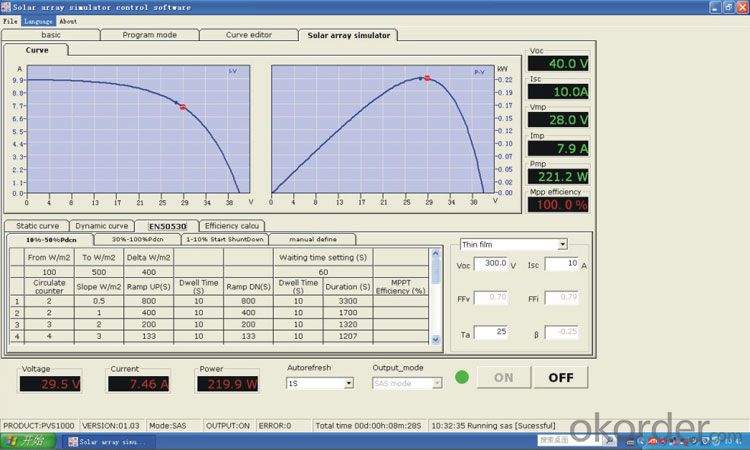 | |||||
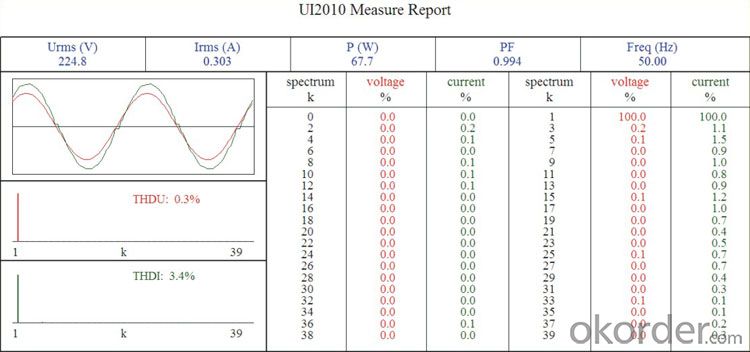
FAQ
Can we visit your factory?
Surely, I will arrange the trip basing on your business schedule.
Can you do OEM for us?
Yes, we can.
How do you pack your products?
We have rich experience on how to pack the panels to make sure the safety on shipment when it arrives at the destination.
Can you help us install the module if we cooperate with you?
We haven’t entered into installation sector, but we have the plan in near future.
- Q: What is the role of a grid-tie inverter in a solar PV system?
- The role of a grid-tie inverter in a solar PV system is to convert the direct current (DC) electricity generated by the solar panels into alternating current (AC) electricity that can be used to power electrical devices in a home or business. In a solar PV system, the solar panels produce DC electricity when exposed to sunlight. However, most homes and businesses use AC electricity, which is the standard form of electricity provided by utility companies. This is where the grid-tie inverter comes in. The grid-tie inverter takes the DC electricity produced by the solar panels and converts it into AC electricity that is compatible with the electrical grid. It ensures that the electricity generated by the solar panels is synchronized with the utility power and can be seamlessly integrated into the existing electrical system. One of the key functions of a grid-tie inverter is to match the frequency, voltage, and phase of the AC electricity generated by the solar panels with that of the utility power. This synchronization is crucial to ensure a smooth flow of electricity between the solar system and the grid, and to prevent any disruptions or damage to the electrical system. Additionally, a grid-tie inverter also monitors the electrical grid for safety reasons. It constantly checks the grid for any voltage or frequency fluctuations and can automatically disconnect from the grid in the event of a power outage or grid failure. This feature is important to protect the safety of electrical workers who may be repairing the grid during an outage. Furthermore, a grid-tie inverter allows for net metering, which is a billing arrangement where excess electricity generated by the solar system can be fed back into the grid. This means that if the solar system produces more electricity than is being used, the excess energy can be sent back to the grid and the homeowner or business owner can receive credits for the excess energy produced. This can help offset energy costs and potentially result in monetary savings. Overall, the grid-tie inverter plays a vital role in a solar PV system by converting the DC electricity generated by the solar panels into AC electricity that can be used to power electrical devices, ensuring synchronization with the electrical grid, monitoring the grid for safety, and enabling net metering for potential financial benefits.
- Q: Can a solar inverter be used with a string inverter system?
- No, a solar inverter and a string inverter system are two different types of inverters used in solar power systems. They cannot be used interchangeably as they have different functionalities and are designed for different types of solar installations.
- Q: What is the role of a solar inverter in preventing system downtime?
- The role of a solar inverter in preventing system downtime is to convert the direct current (DC) produced by solar panels into alternating current (AC) that can be used to power electrical devices and to feed excess energy back into the grid. By maintaining a stable and reliable flow of electricity, solar inverters help prevent disruptions and downtime in the solar energy system, ensuring continuous operation and maximizing energy efficiency.
- Q: Can a solar inverter be used in commercial or industrial applications?
- Yes, a solar inverter can be used in commercial or industrial applications. Solar inverters are designed to convert the direct current (DC) generated by solar panels into alternating current (AC) suitable for use in commercial or industrial settings. They are commonly used to power various electrical loads, machinery, and equipment in these sectors, helping to reduce energy costs and promote sustainability.
- Q: Can a solar inverter be used with solar-powered desalination systems?
- Yes, a solar inverter can be used with solar-powered desalination systems. A solar inverter is responsible for converting the direct current (DC) produced by solar panels into alternating current (AC) that is required for the operation of desalination systems. By integrating a solar inverter, solar energy can efficiently power the desalination process, making it a sustainable and eco-friendly solution for water purification.
- Q: Can a solar inverter be easily integrated into an existing electrical system?
- Yes, a solar inverter can be easily integrated into an existing electrical system. It can be connected to the main electrical panel to convert the DC power generated by solar panels into AC power that can be used to power appliances and devices in the building. However, it is important to consult with a professional electrician to ensure proper installation and compatibility with the existing system.
- Q: How do you calculate the payback period for a solar inverter?
- To calculate the payback period for a solar inverter, you need to determine the initial cost of the inverter and then calculate the annual savings or earnings generated by the inverter. Divide the initial cost by the annual savings to get the payback period, which is the time it takes to recoup the investment through savings or earnings.
- Q: Can a solar inverter be used with a solar-powered CCTV system?
- Yes, a solar inverter can be used with a solar-powered CCTV system. A solar inverter is responsible for converting the direct current (DC) generated by the solar panels into alternating current (AC) that can be used to power the CCTV system. By connecting the solar panels to a solar inverter, the energy produced by the sun can be harnessed and efficiently utilized by the CCTV system.
- Q: How does a solar inverter handle islanding detection and prevention?
- A solar inverter handles islanding detection and prevention by continuously monitoring the electrical grid. If the solar inverter detects a disturbance or a loss of grid power, it immediately stops injecting power into the grid. This action helps prevent the formation of an island, where a portion of the grid remains energized by the solar inverter while the main grid is down. By actively monitoring and ceasing power injection during grid abnormalities, a solar inverter ensures the safety of utility workers and prevents potential equipment damage.
- Q: Can a solar inverter be used with different types of grounding materials?
- Yes, a solar inverter can be used with different types of grounding materials. Solar inverters are designed to be compatible with various grounding systems, such as ground rods, ground plates, and grounding grids. The choice of grounding material may depend on local regulations, soil conditions, and the specific requirements of the solar installation. However, it is important to ensure that the chosen grounding material meets the safety standards and provides proper electrical grounding for the solar system.
Send your message to us
Solar Inverter 10kva KD-WV230 Interver, 260W, High Efficiency & Best Cost-Effectiveness
- Loading Port:
- China main port
- Payment Terms:
- TT OR LC
- Min Order Qty:
- 1000 pc
- Supply Capability:
- 100000 pc/month
OKorder Service Pledge
OKorder Financial Service
Similar products
Hot products
Hot Searches
Related keywords


